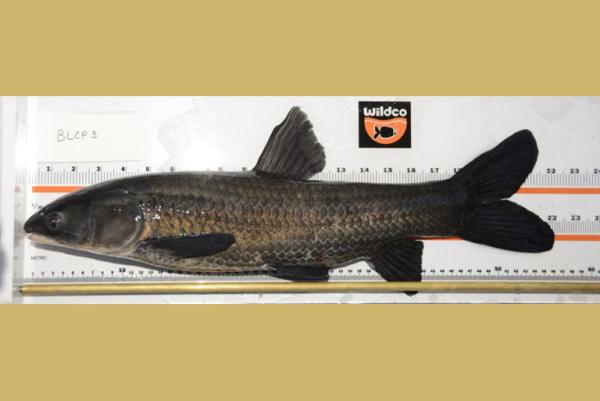Mylopharyngodon piceus (Richardson, 1846) (ITIS)
Black carp
Asia (NAS Database)
Early 1970s (NAS Database)
First introduced as a "contaminant" in imported grass carp stocks; later introduced as a food fish and biological control agent (NAS Database)
Presumed to "negatively impact native aquatic communities by feeding on, and reducing, populations of native mussels and snails, many of which are considered endangered or threatened" (NAS Database)

Black carp
Photo by U.S. Geological Survey
Find more images
Spotlights
Distribution / Maps / Survey Status
Federally Regulated
Videos
All Resources
Selected Resources
The section below contains highly relevant resources for this species, organized by source.
Council or Task Force
Partnership
Federal Government
International Government
State and Local Government
Professional
Integrated Taxonomic Information System. Mylopharyngodon piceus. [Accessed Mar 16, 2023].
Nonindigenous Aquatic Species Database. Fact Sheet - Black Carp. USGS, Gainesville, FL. [Accessed Mar 16, 2023].
